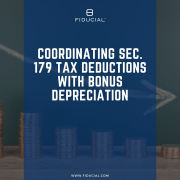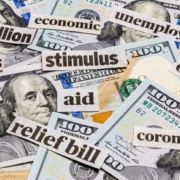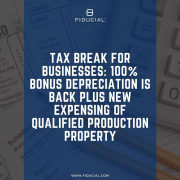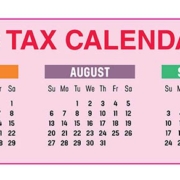When Will I Get My Stimulus Payment Check? Fiducial Has Answers
- Find out when direct deposit stimulus payments were issued.
- Learn the reasons why you may not be receiving a stimulus payment.
- Learn more about stimulus payment phase-out.
- Get the IRS payment schedule for payments by check.
- Find out how non-filers can receive a stimulus payment.
Thankfully, the IRS has already sent out 80 million stimulus payments to taxpayers that included their direct deposit information on their most recently filed 2019 or 2018 return. Good news for tax payers during such uncertain times! So, if you had filed either your 2019 or 2018 return before the direct deposits issued, you should already have a deposit in the bank. But if you’re not seeing a deposit in your account, Fiducial may know why:
- You changed bank accounts since you filed your return, which means you will receive your stimulus payment by check later,
- You owe back child support, in which case the payment will go to satisfy your back-child support, or
- Your stimulus payment was reduced or eliminated because of your higher income. The credit phases out by 5% of the taxpayer’s adjusted gross income (AGI) that exceeds the filing status threshold. The following table illustrates the phaseouts by filing status and AGI.

Stimulus Payment by Check
If you will receive payment by check, the checks are being issued to the lowest income individuals first where the need is the greatest. Checks will follow for others with increasing incomes. Here is the stimulus payment release schedule for payments by check:

What should non-filers do?
If you have not filed a tax return you may or may not need to take any action to receive your stimulus payment. Ask your Fiducial representative any questions you have relating to this topic.
Those that are receiving Social Security, SSI disability, survivors or Railroad Retirement or veterans benefits will automatically receive a stimulus payment for themselves ($1,200). If they have child dependents under the age of 17, they will not receive the $500 stimulus payment for the dependent unless they go the IRS Get My Payment tool. There, they must enter the dependent information. April 22 was the cut-off date for Social Security and Railroad Retirees to update that information.
Further, other non-filers will not receive a rebate unless they complete the IRS Non-Filer Tool. So, give that link a click and send in your information if you qualify for this rebate.
Keep in mind that stimulus payments are actually advance payments for a refundable credit. You will have the opportunity to claim this credit on your 2020 tax return. So, if you, for whatever reason, miss out on the advance stimulus payment, you will receive the payment on your 2020 tax return or substitute process provided by the IRS for non-filers. Helpfully, the IRS also provides an extensive Q&A related to rebate issues.
Have more questions about stimulus checks? Call Fiducial at 1-866-FIDUCIAL or make an appointment at one of our office locations. Ready to book an appointment now? Click here. Know someone who might need our services? We love referrals!
For more small business COVID-19 resources, visit Fiducial’s Coronavirus Update Center to find information on SBA loans, tax updates, the Paycheck Protection Program, paid sick and family leave, and more.









